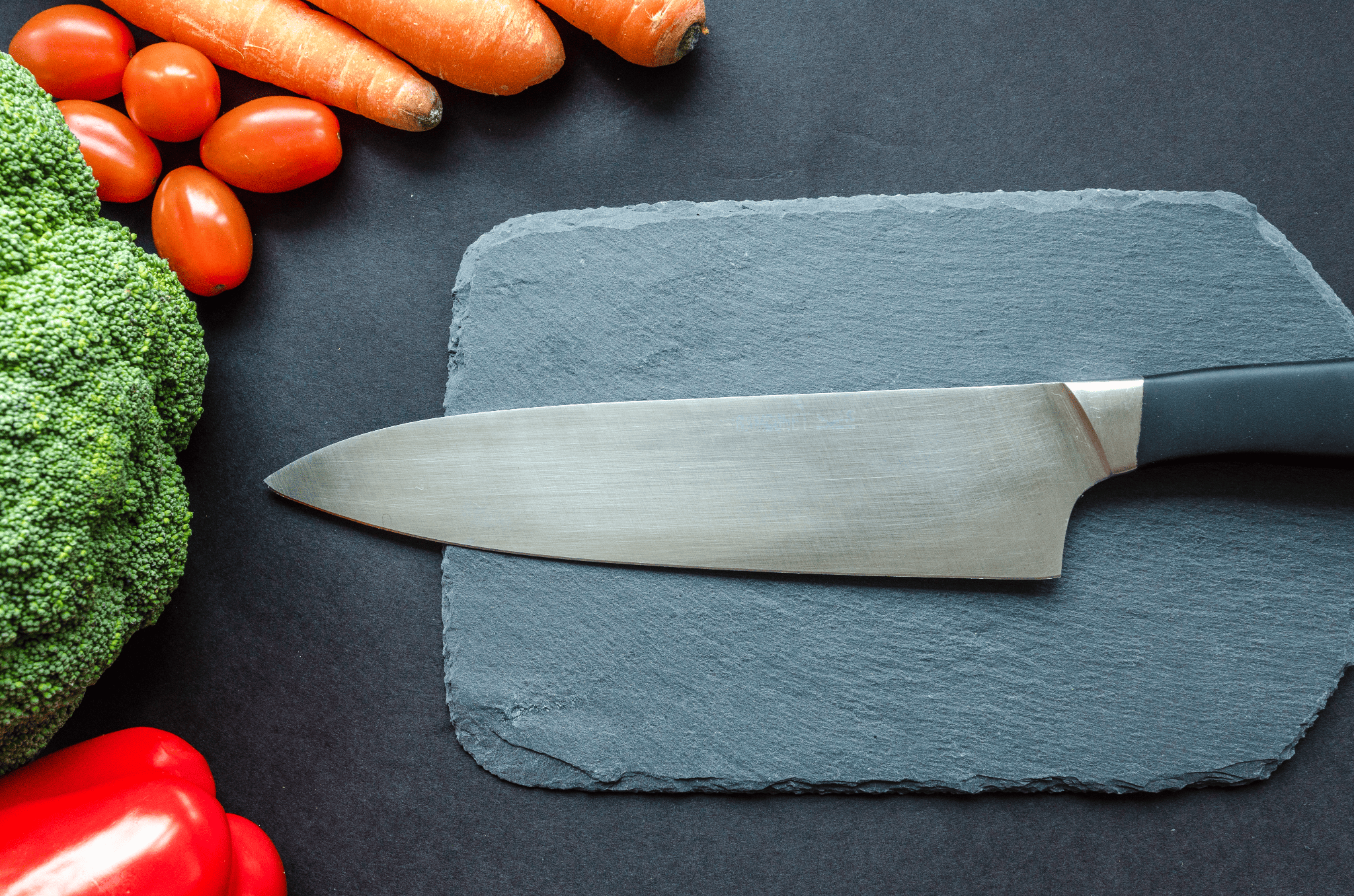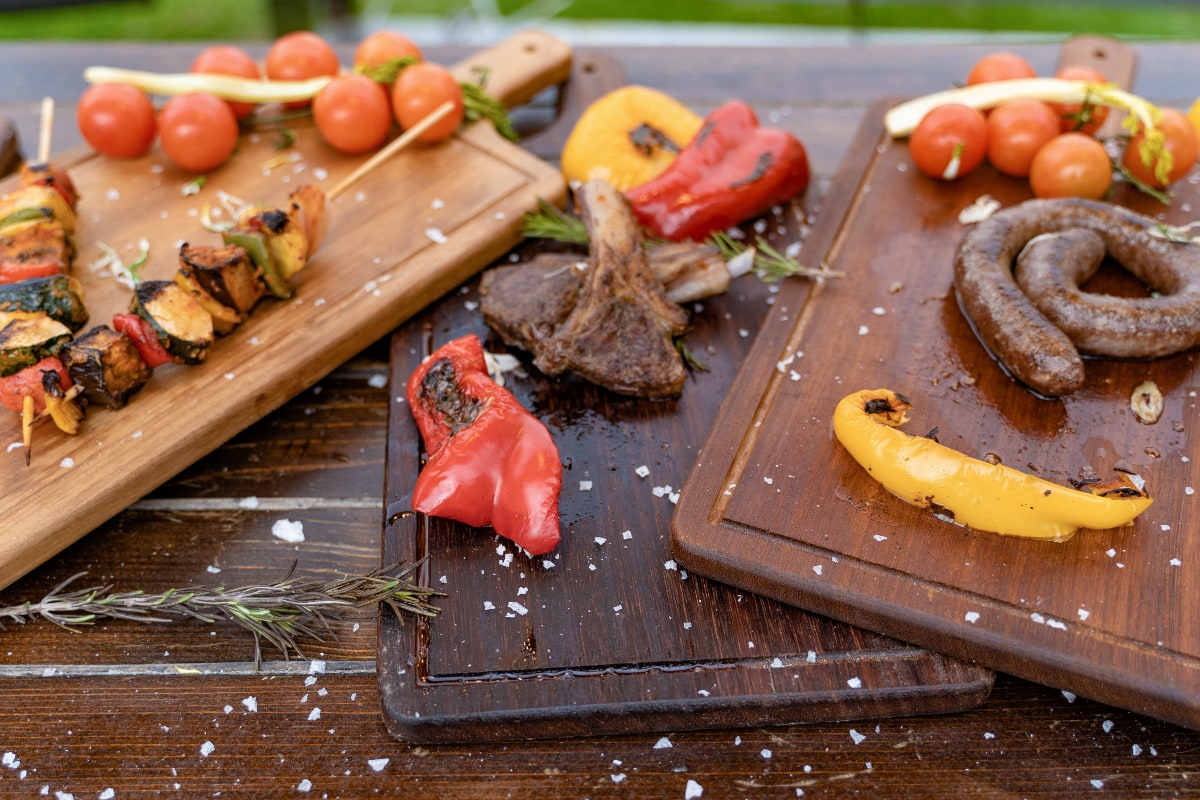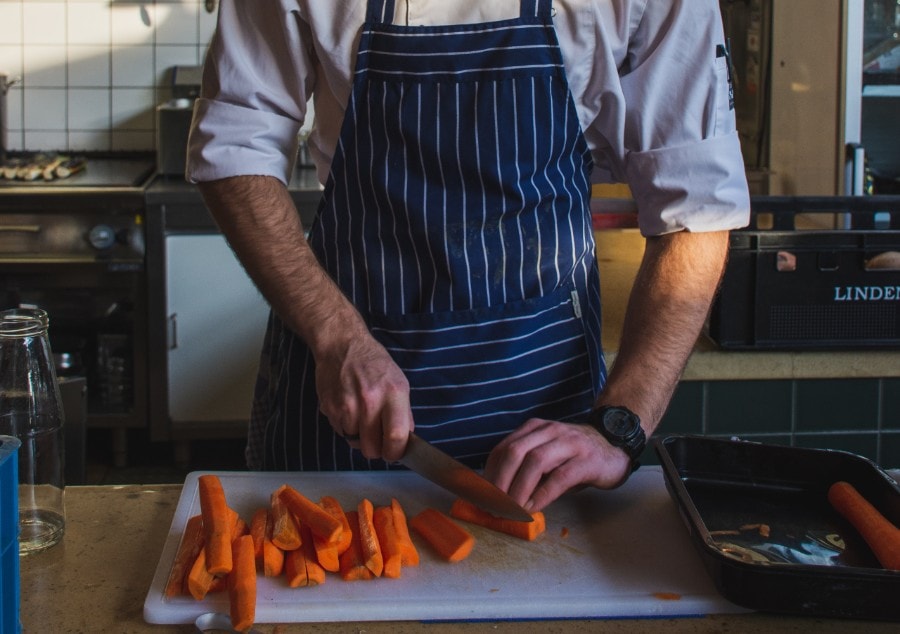Anyone can cook, but not everyone knows how to cut vegetables the right way. However, every home cook should learn a thing or two of the basic cutting vegetables techniques to make cooking easier and faster. This blog post will discuss the nine most basic cutting techniques for vegetables.
We will also provide step-by-step instructions on how to execute each technique. So whether you are a newbie cook or an experienced chef, read on to learn these essential skills!’
Basic cutting techniques for vegetables
Chopping
It is considered that cutting vegetables are techniques that every cook should master firstly. While it may seem like a simple task, there are many techniques involved in chopping vegetables correctly. One of the most basic chopping techniques is the “chopping” method.
To chop vegetables using this method, start by placing the food on a cutting board. Then, use a sharp knife to make horizontal cuts across the food, angling the blade so that the reductions get progressively smaller.
Once you have made several horizontal cuts, start vertical cuts through the food. Again, angle the knife so that the reductions get smaller as you move down the food item. Finally, use a back-and-forth motion to chop the food into small pieces. With practice, you’ll be able to chop vegetables quickly and effectively.
Dicing
Dicing is a technique used to produce small, square pieces of all the same size. The food is first cut into long, thin strips, known as juliennes. Once the juliennes are the desired size, they are cut crosswise into small dice.
Dicing is often used for vegetables, such as carrots and potatoes, and fruits, such as apples. When dicing foods, it is essential to use a sharp knife and ensure that all of the pieces are the same size. This will guarantee that they cook evenly and at the same speed.
To dice correctly, hold the food in one hand and use the other hand to guide the knife as you chop up and down. Remember to use a chopping motion rather than a slicing one; this will produce cleaner cuts. With a bit of practice, you’ll be dicing like a pro in no time!
Mincing
To mince a vegetable, you first need to peel and chop it into small pieces. Then, you can use a sharp knife to chop the pieces even smaller, or you can use a food processor for a more uniform texture.
Once the vegetable is finely chopped, it can be used in sauces, soups, and other dishes. Mincing is a simple knife skill that can be used with almost any type of vegetable. With a bit of practice, you’ll be able to create flavorful dishes that are sure to please your family and friends.
Julienne Cut
Julienning is a cutting technique for vegetables that used to create long, thin strips of vegetables. This method is often used for cutting carrots, celery, and other firm vegetables. To julienne vegetables, the cook first cuts them into small pieces, then uses a knife to create long, thin strips.
The strips can be of any size, but they are typically around two inches long and one-eighth of an inch wide. Julienning is a relatively simple that can be used to create beautiful, evenly cut vegetables.
This method is often used in restaurant kitchens as it provides a quick and easy way to prepare vegetables for salads, stir-fries, and other dishes. Julienning is so versatile that any cook can use it to create perfectly cut veggies.
Batonnetting
Batonnetting is a cutting style used to create a uniform, rectangular pieces of vegetables. To batonnet properly, first cut the vegetable in half lengthwise. Then, cut each half into thin strips, about 1/4-inch thick.
Finally, cut the strips into roughly even pieces, about 2 inches long. Batonnetting is a great way to create evenly-sized pieces of vegetables that will cook evenly and look attractive on the plate. When cutting vegetables for batonnettes, it’s essential to use a sharp knife and to take care not to cut yourself. With a bit of practice, anyone can master the art of batonnetting!
Chiffonading
Chiffonade is a cutting style that is used to create thin strips of leafy greens. The word “chiffonade” comes from the French word for “ribbon.” To chiffonade greens, stack the leaves on top of each other, roll them up tightly, and then slice the roll crosswise into thin strips.
Chiffonading is a quick and easy way to add texture and visual interest to salads and other dishes. When chiffonading greens, be sure to use a sharp knife for the best results. With a bit of practice, you’ll be able to create perfect chiffonade every time.
Rosette cutting
This technique is used to produce uniform, pleasing shapes from vegetables. It is often used for cutting carrots, radishes, and other root vegetables. The key to successful rosette cutting is to use a sharp chef’s knife and cut at an angle.
To begin, wash the vegetable and trim off the ends. Next, cut the vegetable into thin slices, angling the knife as you cut. Once all of the portions are cut, arrange them in a rosette pattern on a cutting board or plate. Finally, use a sharp knife to shave off any rough edges carefully. With a bit of practice, you will be able to produce perfect rosettes every time!
Suprême cutting
The goal is to cut the vegetables into clean, even pieces that are all the same size. This is one of the cutting techniques that is often used for French cooking, as it results in beautifully presented dishes.
To supreme a vegetable, first, wash and dry the vegetable. Next, cut off any rough ends and peel if necessary. Cut the vegetable in half lengthwise, then slice it thinly crosswise. You should end up with long, thin strips of vegetables that are all the same size. Serve immediately or store in an airtight container until ready to use.
Paysanne cutting
Paysanne cutting is a cutting style used to create thin, even slices of vegetables. It is often used for vegetables that are difficult to slice thinly, such as carrots or celery. To properly execute a paysanne cut, first trim the vegetable so that it is the same length as the desired slice. Then, holding the vegetable in one hand, use a sharp knife to make thin, horizontal cuts perpendicular to the length of the vegetable. For best results, slice the vegetable as thinly as possible. Paysanne cutting is a versatile technique that can be used to create evenly-sliced vegetables for salads, stir-fries, and other dishes. With a bit of practice, anyone can master this technique and add a professional touch to their cooking.
What are the best knives for cutting vegetables?
 The type of knife you use for cutting vegetables is essential. You want to use a sharp knife that is the right size and shape for the task at hand. For most cutting techniques, a chef’s knife or Santoku knife will work well.
The type of knife you use for cutting vegetables is essential. You want to use a sharp knife that is the right size and shape for the task at hand. For most cutting techniques, a chef’s knife or Santoku knife will work well.
These knives are versatile and can be used for a variety of cutting tasks. If you are cutting small or delicate vegetables, you may want to use a paring knife. Paring knives have a small blade that is easy to control.
This makes them ideal for cutting vegetables such as mushrooms or cherry tomatoes. Whichever type of knife you choose, it is important to keep it sharpened for best results. With a sharp knife, cutting vegetables will be quick and easy!
As you can see, there is a variety of cutting styles that can be used for vegetables. These techniques can be used to create different shapes, sizes, and textures. With a bit of practice, you’ll be able to master these cutting techniques and take your cooking to the next level. So what are you waiting for? Get in the kitchen and start practicing! Who knows, you may even discover a new favorite cutting technique.
Where can I find a good knife for cutting vegetables?
In order to cut vegetables perfectly, one must use the correct technique. And in order to have the proper cutting technique, you need a good knife. That’s why we recommend heading over to Damas-Knives and picking up a few knives for your kitchen. With such a wide variety of knives to choose from, you’re sure to find the perfect set of blades for your cooking needs. So what are you waiting for? Start shopping now!
What is your favorite way to cut your vegetables? Let us know in the comments below! And be sure to check out our other blog posts for more kitchen tips and tricks. Happy cooking!



